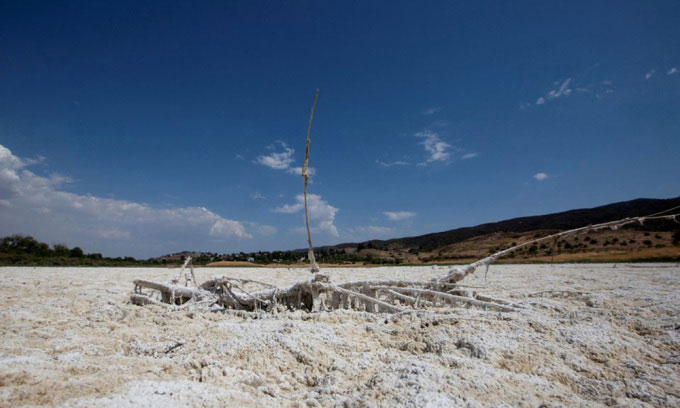More than half of the world’s major lakes and reservoirs have shrunk since the early 1990s, mainly due to climate change. This situation raises concerns about the lack of water for agricultural, hydroelectric and human use.
This is information given in a study published on May 18. An international team of researchers assesses that some of the world’s most important freshwater sources – from the Caspian Sea between Europe and Asia to South America’s Lake Titicaca – have been dehydrated at a cumulative rate of about 22 gigatons. every year for nearly three decades. This amount of water is equivalent to 17 times the volume of Lake Mead, the largest reservoir in the United States.

Photo taken of Lake Elizabeth Lake in California (USA) in June 2021. (Photo: Reuters)
The researchers found that unsustainable human use , changes in precipitation, runoff, sedimentation and elevated temperatures have caused lake levels to drop globally . Experts concluded that in the period from 1992 to 2020, 53% of lakes fell into a state of reduced water volume. Nearly 2 billion people are directly affected and many areas have faced water shortages in recent years.
Hydrologist Fangfang Yao at the University of Virginia (USA), who led the study published in the journal Science, said that 56% of the decline in natural lakes is due to global warming and human consumption. However, the warming of the Earth is “a larger contributor to that”.
Climate scientists generally assume that arid regions of the world will become drier due to climate change and that wet areas will become more humid. However, research shows significant water loss even in humid regions. “This should not be taken lightly ,” said Mr. Yao.
Scientists have long warned that global warming needs to be prevented from exceeding 1.5 degrees Celsius to avoid the most dire consequences of climate change. The world is currently warming at a rate of about 1.1 degrees Celsius.
Research published May 18 shows that unsustainable human use has affected the amount of water in lakes. While lakes in Afghanistan, Egypt and Mongolia are affected by rising temperatures, which could increase the amount of water lost to the atmosphere.
